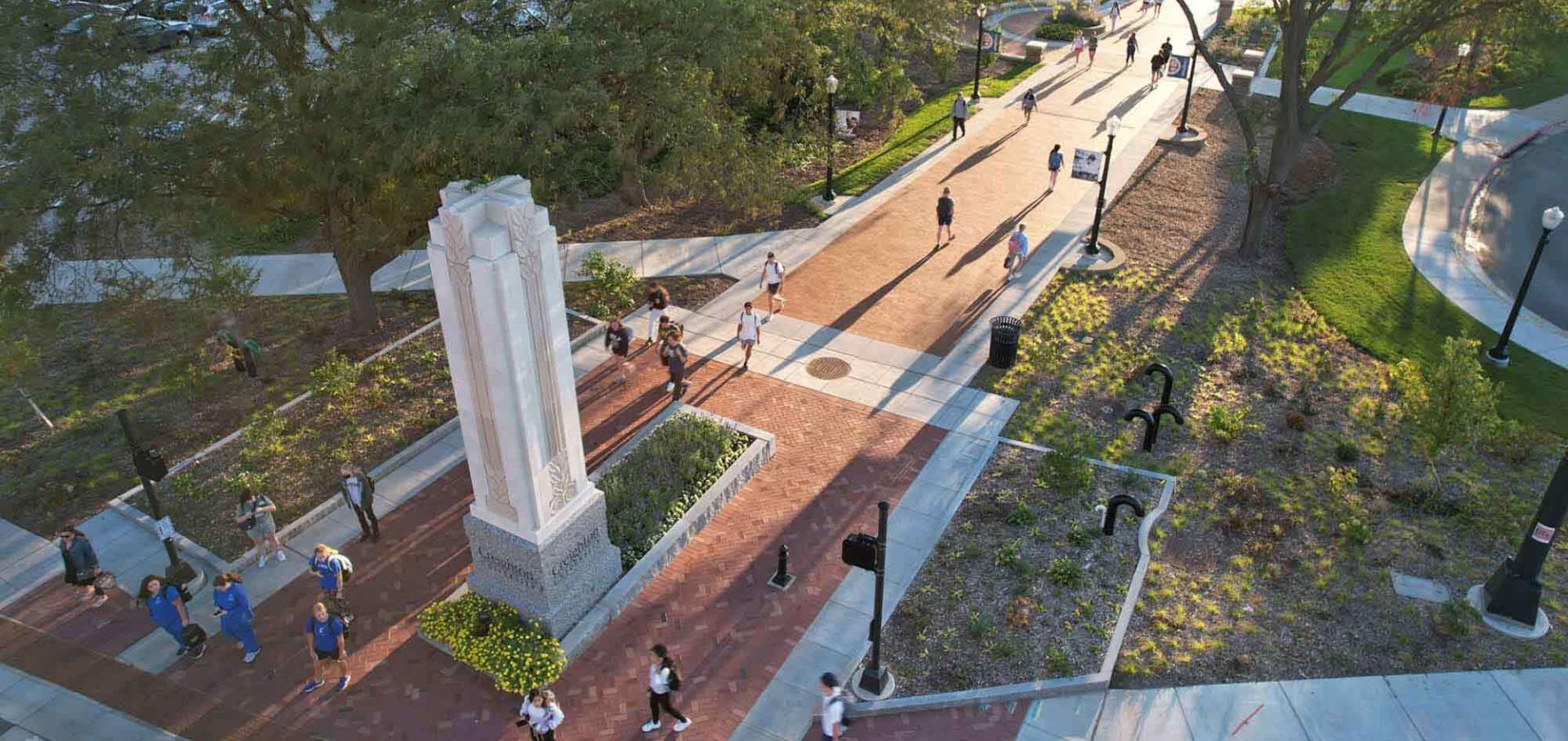
Federal Student Loans
Types of Federal Loans
Federal student loans are offered through the William D. Ford Federal Direct Loan Program. This program is administered by the U.S. Department of Education. (The Department of Education is the lender.) Direct Loans are one of the most common types of student loans and are available to students to help cover the cost of higher education. Direct Loans are awarded as part of your total award package, which may contain other types of aid. Completing a FAFSA each year is a requirement to receive consideration for these loans.
Explore the different types of Federal Direct Loans available below.
Types of Direct Loans
The Federal Direct Loan Program offers the following types of loans:
Direct Subsidized Loan: This loan is for undergraduate students with demonstrated financial need, as determined by the FAFSA. The Federal government pays the interest on this loan while the student is enrolled in school on at least a half-time basis. This means that the student is not responsible for paying interest while in an in-school, grace or deferment period. Graduate and students are not eligible for this loan program.
Direct Unsubsidized Loan: This type of loan is not based on financial need. Interest is charged while the student is in school, grace and deferment periods. Interest accrued during these periods will be capitalized onto the principal amount borrowed when the student drops below half-time enrollment. When students complete the required Master Promissory note (MPN) and online loan entrance counseling, they are given the option of making interest payments during the in-school period.
Your financial aid award letter will specify the amount of subsidized and/or unsubsidized loan funds you are eligible to borrow.
Direct PLUS Loan: This is an unsubsidized loan for the parents of dependent students. PLUS loans help pay for education expenses up to the cost of attendance minus all other financial assistance. Loans will start to accrue interest from date of first disbursement. Interest is charged during all periods and repayment normally begins 60 days after the loan is fully disbursed. A FAFSA is required to determine the parents' eligibility along with a credit check of the parents' credit worthiness.
One key difference with a Direct PLUS Loan for parents of dependent students is that the parent applies for the PLUS Loan through the U.S. Department of Education's website using their own FSA ID. They can apply after the student’s FAFSA has been completed.
Also note:
- For PLUS loans made to parents that are first disbursed on or after July 1, 2008, the borrower has the option of beginning repayment on the PLUS loan either 60 days after the loan for that school year is fully disbursed or wait until six months after the dependent student on whose behalf the parent borrowed ceases to be enrolled on at least a half-time basis.
- When a parent applies for a Direct PLUS Loan, the U.S. Department of Education will check their credit history. To be eligible for a PLUS Loan, you must not have an adverse credit history. If you are found to have an adverse credit history, you may still borrow a PLUS Loan if you get an endorser who does not have an adverse credit history. An endorser is someone who agrees to repay the Direct PLUS Loan if you do not repay the loan. The endorser may not be the student on whose behalf a parent obtains a Direct PLUS Loan.
- If a parent applies for a PLUS loan and is denied because of negative credit, the Financial Aid Office will receive this information. Upon verification of a PLUS Loan denial and if no endorser is obtained, dependent students are eligible for an additional $4,000–$5,000 unsubsidized loan, depending on grade level. The Financial Aid Office will offer the additional unsubsidized loan funds on the student's award letter on the NEST. The student can then either accept or decline the additional loan funds.
Direct Grad PLUS Loan: This loan is available for creditworthy graduatestudents. Students can borrow up to the full cost of attendance, less other financial aid received. Interest is charged during all periods. Students are eligible for an in-school deferment while enrolled in school on at least a half-time basis. The first payment will be due 6 months after no longer enrolled at least half time.
While the student is enrolled in school on at least a half-time basis, they are eligible for an in-school deferment that allows the student to postpone payments until they drop below half-time status. In most cases, an in-school deferment will automatically be granted based on enrollment data reported to the U.S. Department of Education. Note: Students who receive an in-school deferment will be notified of the deferment and of their option to cancel the deferment and begin making loan payments.
More to Know
All loan disbursements have a federal loan origination fee deducted from each disbursement. See the loan disclosure statement provided by your loan servicer for current rates. Because loan origination fees are charged to the borrower, the actual amount received will be slightly less than the gross amount borrowed.
Loan proceeds are credited to the student's account in equal amounts for each term of enrollment in the school year. Interest rates vary depending on when the loan is first disbursed and if it is a subsidized (no interest accrues) or if it is unsubsidized.
Most federal student loans are eligible to be combined into one Direct Consolidation Loan. A consolidation loan pays off the previous loans and a new loan is created. This can be an effective way to combine multiple loans with varying terms into a single more manageable loan, especially during repayment. However, some deferment and cancellation benefits may be lost in doing so. Federal educational loans cannot be consolidated until the student is no longer attending an institution of higher education on at least a half-time basis.

Applying for Financial Aid
To apply for aid, you’ll need to complete the FAFSA and apply to Creighton. The FAFSA can be filed any time starting in October for the next school year. Creighton's school code is 002542. Once you’ve completed the FAFSA and have been accepted to Creighton, you’ll receive an award notification.
Important Information About the Loan Process
Keep in mind that new borrowers must complete a Master Promissory Note (MPN) and online loan entrance counseling. Loan funds cannot be disbursed until loan entrance counseling has been completed. You will need your Department of Education PIN to complete the processes.
(Returning students, if you completed a Direct Loan Master Promissory Note last year for a subsidized or unsubsidized loan, you will be considered a serial borrower. Returning students do not need to complete a new MPN or loan entrance counseling.)
Loan Entrance Counseling
If you haven’t previously received a Direct Loan, the federal government requires you to complete entrance counseling to ensure that you understand the responsibilities and obligations you are assuming.
If you are completing entrance counseling to borrow a loan as an undergraduate student, then the entrance counseling will fulfill counseling requirements for Direct Subsidized Loans and/or Direct Unsubsidized Loans.
If you are completing entrance counseling to borrow a loan as a graduate or professional student, then the entrance counseling will fulfill counseling requirements for Direct Unsubsidized Loans and/or Direct Grad PLUS Loans.
Complete loan entrance counseling.
The Master Promissory Note
The Master Promissory Note (MPN) is a legal document in which you promise to repay your loan(s) and any accrued interest and fees to the U.S. Department of Education. It also explains the terms and conditions of your loan(s). You can borrow additional Direct Loans on a single MPN for up to 10 years.
- For each federal student loan that you receive under an MPN, you'll receive a disclosure statement by email from StudentAid.gov.
- The disclosure statement provides specific information about that loan, including the loan amount, loan fees and the expected disbursement dates and amounts. Other disclosures will be provided to you throughout the loan process.
- After the first disbursement of your loan has been made, your loan will be assigned to a loan servicer and you will be provided with the servicer's name, address and contact information.
- Your servicer will service, answer questions about and process payments on your loan after you enter repayment.
- Parents who take out a PLUS Loan for their dependent student will get an immediate decision and then complete the MPN.
Loan Disbursement
Federal loans and most private loans are disbursed electronically to your student account at the Business Office. Provided all requirements are met, loan funds generally disburse about three days before classes start each term. If your financial aid exceeds direct costs, the Business Office will refund the balance to you generally within two business days by signing up for direct deposit on the NEST.


Loan Disputes
The Federal Student Aid Ombudsman works with federal student loan borrowers to resolve loan disputes or problems from an impartial, independent viewpoint. If you have a problem with a federal student loan, you should contact the holder of the loan and try to resolve the problem. If you can’t resolve the problem, contact the Federal Student Aid Ombudsman.





